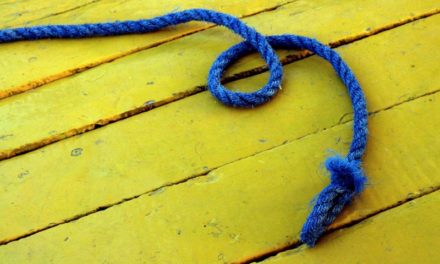Sanctuary 201 Class 5
GROUND RULES
The first thing we need to do when starting a new game no one has played before is….? [lay down the ground rules]
The Tabernacle also has ground rules.
- The Courtyard represents things happening on the earth
- The Tabernacle represents things happening in heaven
- From the last class we learned that the Tabernacle is different from the Sanctuary, though they work together. The Tabernacle works mostly with the basics, the foundations, and that is what we are considering today.
- Because heaven works on different levels than earth, we can expect God to alter some earthly things to better represent the heavenly.
- It had its own cubit (for measurement of size)
- Eze 43:13
- “The tabernacle was so constructed that it could be taken apart and borne with the Israelites in all their journeyings. It was therefore small, being not more than fifty-five feet in length, and eighteen in breadth and height.” PP 347 [The structure was 30 cubits long and 10 cubits high. A regular cubit was 18”, or about a foot and a half. 10 x 1.5 feet = 15 feet. So the prophet saw that Ezekiel’s measurements were applicable to the first Tabernacle as well.]
- It set the standard on the shekel (for measurement of value)
- Exodus 30:13 (1/2 shekel for the sanctuary offering)
- Lev 27:25 (It set the standard for all commerce) [The sanctuary shekel was to be the standard for all commerce and trade [to keep all business on an equitable base, it is likely the priests kept a standard in the sanctuary by which all other weights were measured]
- And we will find it also had its own measurement of time, which we will call the Temple Timeline. It is specific for establishing the date for 1844—a VERY IMPORTANT date for end time events.
- It had its own cubit (for measurement of size)
- The design of the structure (Tabernacle) and its contents (Sanctuary) is based on the Persons of the Lord God Almighty and the Lamb. (Rev 21:22)
- Since there is no sin in the Lamb (1John 3:5), there is no sin (or consequences of sin) portrayed in the Tabernacle or Sanctuary
- There are only two things mentioned that have no part in the Plan of Salvation
- Neither are they part of the physical structure nor its contents
- One that is daily visible is the first thing the penitent encounters upon entering the Courtyard, a pile of ashes on the east side of the altar (Lev 1:16; 6:10), which are removed from the camp to a clean place (Lev 6:114:12) –ashes are what’s left after God takes His part of the offering (Will there be any unproductive parts of our lives left behind when we go to heaven?)
- The second is a vulnerable young goat, a kid, the scapegoat, once a year, that is led out of the camp and released into the wilderness (Lev 16:10) to fend for itself
REVIEW
We learned that there are two types of curtains to represent the human and divine natures of the Messiah (goat-hair & linen)
(Last class) we saw the goat-hair curtain was used to set the countdown of the timeline, which ended before the Most Holy compartment began
THE SIXTH GOAT-HAIR PANEL
It was totally in the Courtyard
It was surrounding the entrance & folded in half (no reason given—so we must look elsewhere)
Are we to find it exasperating that God gave a detail but did not give a reason? Why? [Isa 28:10,13 — it’s a call to study]
What do we know about the courtyard? [represents things done on earth; was to last 3 ½ years (Dan 9:27), would end with Christ’s death]
Since we have referenced Dan 9, let’s look at it a little more carefully (verses 24-27).
- (24) First thing we notice is that this prophetic period is expressed in weeks. Isn’t this unusual? Has any other prophetic timeline used weeks as an increment? [none]
- The time period is seventy 7s. 7 is used by God for very special events (like in Creation and Revelation).
- (25) This is mostly a Messianic prophecy (which might explain the reason for the 7s)
- The prophecy is further divided into 7 weeks and 62 weeks
- (26) the word “cut off” is a covenant word, referring to the cutting of flesh and passing between the parts
- And then the city and sanctuary will be destroyed
- (27) During this week the Messiah shall confirm (strengthen) the covenant
- But He shall be “cut off” in the middle of the week (3 ½ years)
- This will affect the system of sacrifices. They will, in effect, cease
- He will not be around the last part of the week
So how does the sixth goat-hair panel seen only in the Courtyard compare to Daniel 9:27?
- Both express an involvement of the Messiah on this earth
- Both cover Christ’s messianic earthly ministry, which lasted 3 ½ years
- Both involve a “cutting off”—a death of the Lamb
- Both include an equal time not included in the messianic period [What is different: Daniel includes a prophetic close of probation for a nation, whereas Moses focuses solely on the Messiah’s work.]
THE FOLD
Let’s look at this panel. The fold is indicated by the ^. Would the crucifixion, the point representing when the Messiah dies and is resurrected and returns to heaven to continue His Melchizedek priesthood for us, be at point A or B? Remember these first 6 panels were all joined together.
![]()
So if B is the death of Christ, A would have to be His Anointing. But the panel is folded in half, making half of it invisible to any onlooker in the Courtyard. This would not be a good representation of the Messiah’s inauguration, for the baptism was public, visible to all, as was Christ’s life ever afterward. So we would have to position A at where the fold is. This part, then, would represent the 3 ½ years of Christ’s ministry as the Messiah, as prophesied in Daniel 9:27.

But what about the back side? What might that represent? What would come before His anointing, something that would cause the Father to say, “Thou art my beloved Son; in thee I am well pleased”? – Luke 3:21-22)
“None could say that He had worked a miracle; but virtue—the healing power of love—went out from Him to the sick and distressed. Thus in an unobtrusive way He worked for the people from His very childhood. And this was why, after His public ministry began, so many heard Him gladly.
“Yet through childhood, youth, and manhood, Jesus walked alone. In His purity and His faithfulness, He trod the wine press alone, and of the people there was none with Him. He carried the awful weight of responsibility for the salvation of men. He knew that unless there was a decided change in the principles and purposes of the human race, all would be lost. This was the burden of His soul, and none could appreciate the weight that rested upon Him. Filled with intense purpose, He carried out the design of His life that He Himself should be the light of men.” {DA 92}
“Tidings of the wilderness prophet and his wonderful announcement, spread throughout Galilee. The message reached the peasants in the remotest hill towns, and the fisher folk by the sea, and in these simple, earnest hearts found its truest response. In Nazareth it was told in the carpenter shop that had been Joseph’s, and One recognized the call. His time had come. Turning from His daily toil, He bade farewell to His mother, and followed in the steps of His countrymen who were flocking to the Jordan.” {DA 109}
To show the importance of this hidden (to us) period, the Godhead made both sides equal in length. Purity in the life before His ministry was just as important as faithfulness during those final 3 ½ years.
If the 30 years before His baptism were faithfully represented, yet folded behind the front part, how would it appear when stretched out flat? Which side would be considered most important? Would this support God’s thought?
Or would it make more sense to represent that portion of life by an equal part of the panel—to illustrate the importance of both aspects of His life in His Father’s eye?
THE SEVEN YEAR PERIODS
We now meet the purpose of this sixth panel. It is to begin the countdown, but it doesn’t start with the Messiah’s death nor His anointing. When the underside of the fold is stretched out like all the other panels, we see it reaches to a point 7 years BEFORE Christ’s crucifixion (His death is an historical point that is easy to prove) – AD 31 (GC 327). So the goat-hair timeline begins actually in A.D. 24, seven years before His death.
But we also have the value of each goat-hair panel now (7 years, or one prophetic week in Daniel’s reckoning). And at this point we move into the Tabernacle, into the Holy Place, where the remaining 5 goat-hair panels lead us. But we have a problem. The 35 years covered to the taches where the vail hangs does not bring us anywhere close to any significant event, let alone 1844. So God fixes that with an ingenious device.
THE TEMPLE TIMELINE
As we noted at the beginning of class today, God modifies certain things we are familiar with to accomplish His purposes in the Tabernacle. And the Timeline needed help.
Going back to Daniel 9 we observed that God spoke to the prophet in prophetic WEEKS. This was to be associated with the Messiah’s arrival and 3 ½-year ministry before He would be “cut off.” How would that fix the Temple Timeline problem?
Easy. The goat-hair panels are already set in day/year language, so God can’t extend the time period that way. So He devised another way that would still meet the conditions. It’s designed into the linen panels.
The length of the linen panels was 28 cubits. That number does not show up anywhere in the Bible (to help us understand its significance). But there is another way we can look at the number. 28 is a multiple of 4 and 7, a combination God likes to use for very special events (like the 4th commandment addressing the 7th-day Sabbath, the seven loaves to feed 4 thousand Gentiles, with 7 baskets remaining, and the 4 beasts of Rev 5 and 15, interacting with the Lamb with 7 horns, 7 eyes, and 7 Spirits, plus the 7 angels having 7 vials full of Gods wrath). That is hard to miss. But how does that help us?
Remember each 4 cubit-wide goat hair panel represents a 7-year period (a prophetic week in years), so likewise the 4 cubit-wide linen panel must also respect the day/year principle, but it must also keep to the week theme in doing so. So, since the goat-hair panels are expressed as a week of years, the linen panels will represent the year as 52 weeks of years!
And this easily solves the Temple Timeline problem, for 52 times each 7-year goat-hair panel times the 5 panels equals 1820 Temple Timeline years. But what about that 6th panel in the courtyard? Remember, it is fastened to the other five panels to make a single curtain to the taches. Since it doesn’t have a linen panel underneath it like in the Tabernacle, it doesn’t have the multiplying factor, so it just takes us to a week of years before Christ’s death, from A.D. 31 to A.D. 24, to begin the timeline countdown. 24 + 1820 = 1844.
Some might think this is just a tricky manipulation of numbers and texts, but consider the possibilities of using only four numbers, one from the text, two extrapolated from historical events related to the prophecy, and another way of considering years (to fit the prophetic day/year standard in Daniel 9), yet sticking to all the conditions (the 3 ½ years of Christ’s ministry, His death, the folding over of that 6th panel, the purpose of the courtyard, the 5 panels in the Tabernacle, the two types of curtains, etc.), and coming up with the exact year that fulfills the 2300-year prophecy. Chance or design?
It stands as an elementary witness to the climax of the 2300-year Prophecy, and to the creative, omniscient, amazing mind of God!





